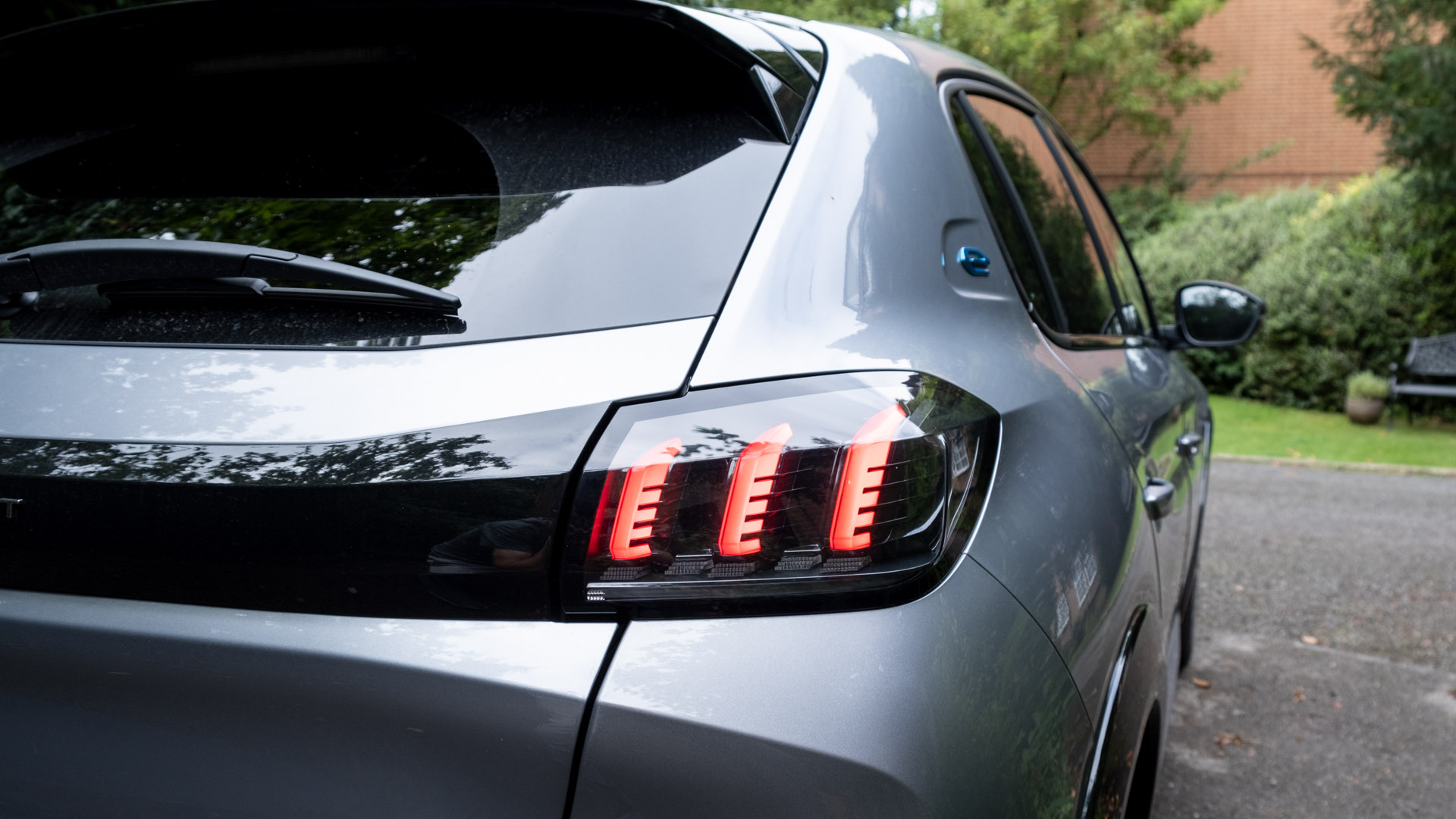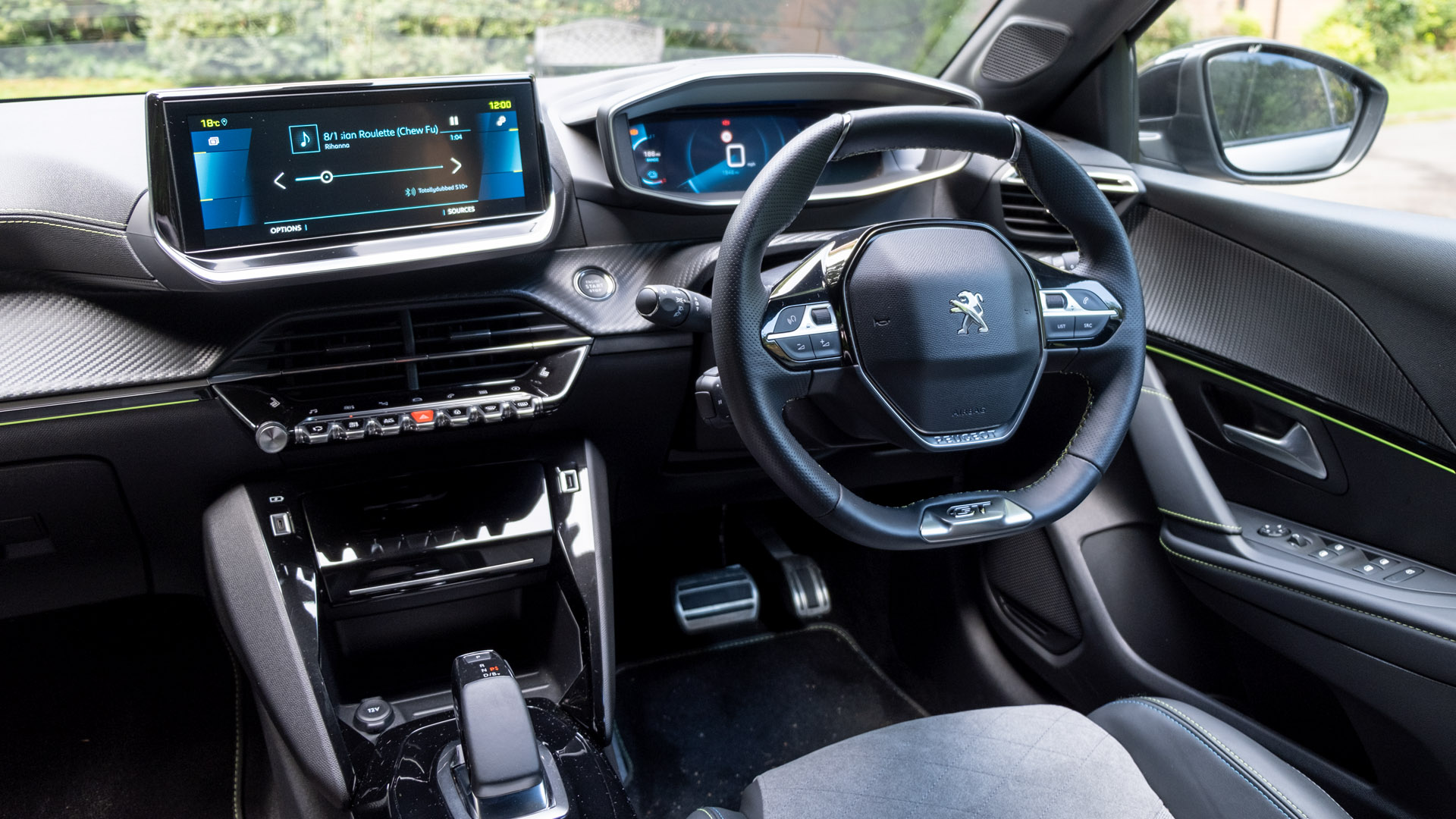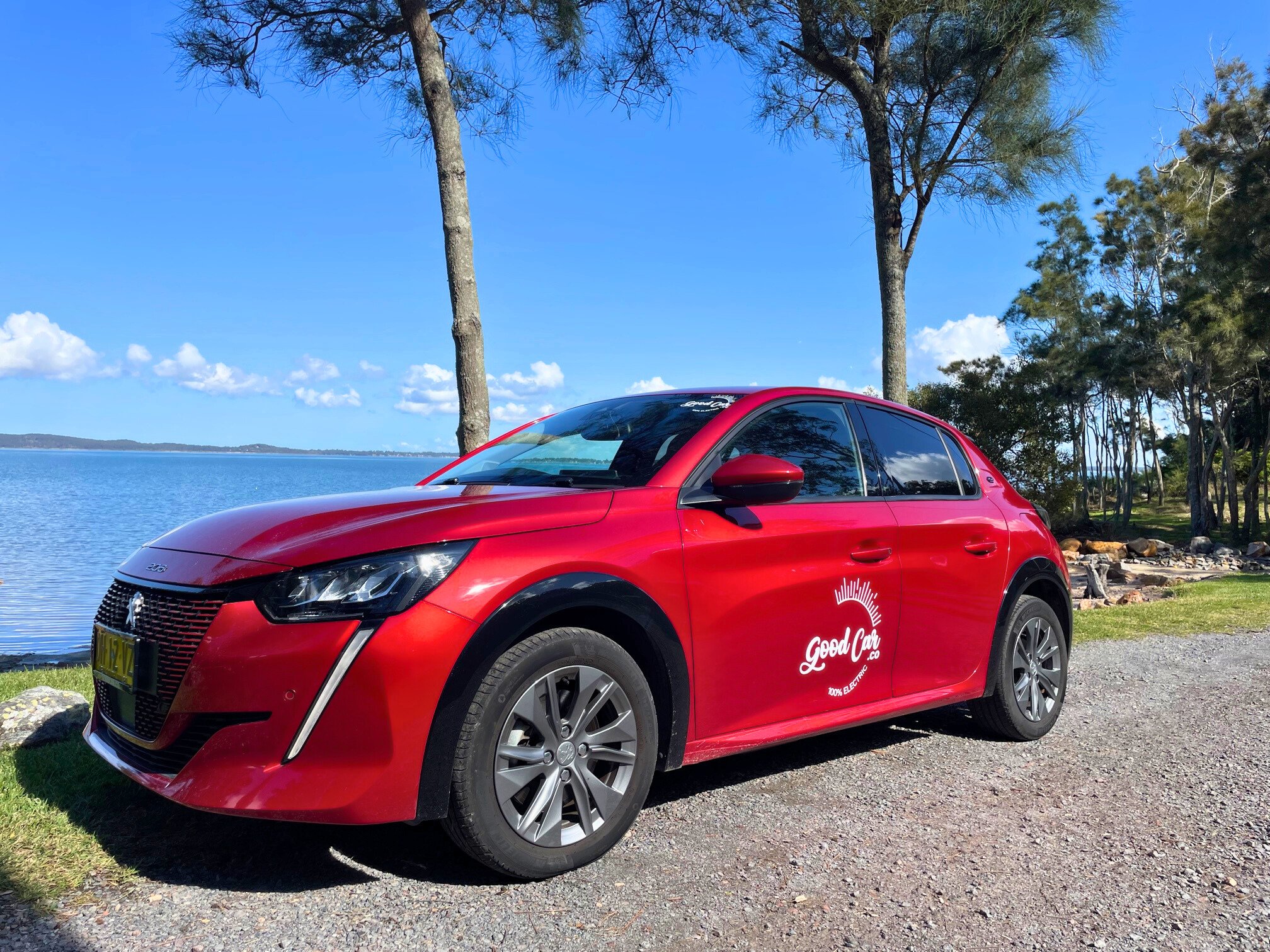Peugeot e208



The Peugeot e208 small, zippy and 100% electric!
we love our smallest member of the goodcar family, and you will too!
Earlier this year we welcomed the Peugeot e2008, and now we are also bringing along it's little sister the e208, the first in Australia!
It's small in size (great for small parking spaces), however it's full to the brim with features, up to 290km (city) driving, a sleek and sporty interior, funky and easy to use 3D dash and great safety features.
We have two trims available - the Allure which includes fancy automatic windscreen wipers, a reversing camera, automatic air conditioning and leather effect upholstery. For even more, upgrade to the GT Trim for a 10-inch touchscreen system in the centre console, flash 17-inch alloy wheels, a diamond black roof, smartbeam assist LED headlights, a frameless electrochrome rear view mirror, customisable ambient interior lighting (change it to your mood or your favourite colour!) and lots more.
Overview of Peugeot e208
Small but mighty! Here are some of the technical details
✔ 50kWh battery size with a zippy power output of 100kW
✔ Type 1 AC and ChAdeMO DC charging ports
✔ We think the real world range of the car is 290km city, 245km highway driving. This range is based on the EV database and de-rated 5% to account for the age of the vehicle, and Joe from our Logistics department cruising the streets of sunny Newcastle!
✔ Eco, Normal and Sport driving modes, B Mode (B Mode engages the maximum level of regenerative braking, feeding energy back into your battery so you can go further on a single charge)
✔ Adaptive Cruise Control and blind spot alert in side mirrors
And some of the fancy stuff
✔ 10 inch screen with Apple Car Play, Android Auto, heater controls
✔ 'i-Cockpit and 3D instrument' display
✔ Panoramic Sunroof with tinted glass and black out blind
✔ Heated front seats
✔ Push button start
✔ Hands free locking and unlocking
✔ Reversing camera with birds-eye view
✔ Shiny alloy wheels
Measuring up the e208
✔ Height: 1430mm
✔ Length: 4055mm
✔ Width: 1745mm
✔ Ground Clearance: 119mm
✔ Cargo Space: 311 litres with the rear seats up, 1160 litres with the seats folded down
Trip Planning in your e208
Information and tips for charging your e208
It's pretty important to know how and where you will charge your electric car. Charging at home is the most convenient, cheapest, and the best approach for your battery. It's like charging your mobile phone. When you get home, just plug in your car and in the morning it will be charged and ready to go! The other essential charging infrastructure is the DC fast-chargers. These enable longer trips and are part of a growing network. See this website for a map of charging locations and this website, where you can plan your trip between charging stations.
Please note: Our e208 are imported from Japan. As such they feature a ChAdeMO DC fast charge port and the J1772 (Type 1) plug.
"Plugshare": Find all the chargers in the world!
As you drive your electric car you will become familiar with the local chargers and their location. If you need to plan a trip and see if the charger is compatible with your car, we recommend Plugshare. Its a searchable database of all available chargers. We recommend you create an account and enter in your car details. That way you can easily search the chargers that your car can use. Be a good Plugshare citizen and log in when you are charging, it helps the next people know the charger is working and available.
Home charging - EVSE
The Hyundai can be charged by connecting a 'EVSE' charger with a "Type 2 Plug" to a 10A 240v powerpoint - this is the charger that comes supplied with the car. We recommend that the circuit be tested by an electrician to ensure the cabling is in tip-top condition. These charge your car at around 10km of range per hour (10km/h)
Destination charging
When you're out and about, there are quite a few locations with “destination chargers”. These all charge similar to a dedicated home charger. Most require you to bring your own "Type 1 to Type 2" cable. They are often installed as a “bollard” with charger integrated or mounted on a wall. The cost of these may be free (lucky you) or included in the parking charge at the location.
"A Better Route Planner" is awesome
There is also a website and App called "A Better Route Planner" Once you have entered your vehicle you can plot a journey on the map and it tells you the best places to stop and charge to get to your destination the quickest way you can.
Home charging - Type 2 charger
If you want to charge your car faster and reduce any chance of electrical issues, it makes sense to install a dedicated charger. Some even come with the ability to directly divert your solar power to your car when the sun is shining! These cost around $1000 for the charger and between $500-$1,000 to be installed by an electrician. These charges your car at rates up to 40km of range per hour (40km/h). It's best to get a charger installed that has a “type 2 socket” on the charger side. You then use a "Type 2 to type 1" cable that connects your car to the charger - Why? - it future proofs your installation because it's easier to change a cable than a charger, it also allows you to use your cable at a public chargers that are also Type 2.
DC fast charging
DC fast-charger will charge the car at approx. 300km/hr. It uses the ChAdeMO fast charge system. In most locations, you need a dedicated phone app to access these chargers. Please note, the first 80% of charge with these is at full speed and then the charge rate slows down at the end. This protects the battery life, but may need to be factored into the time you spend at the charger.

